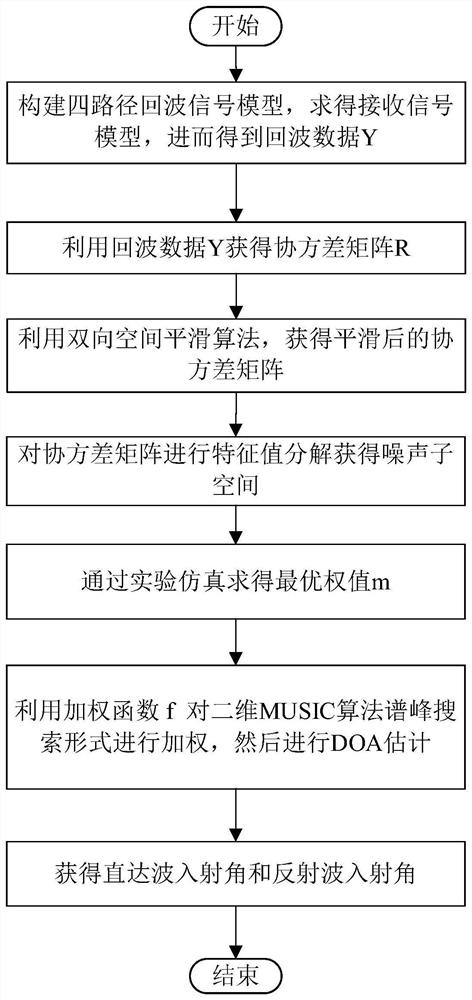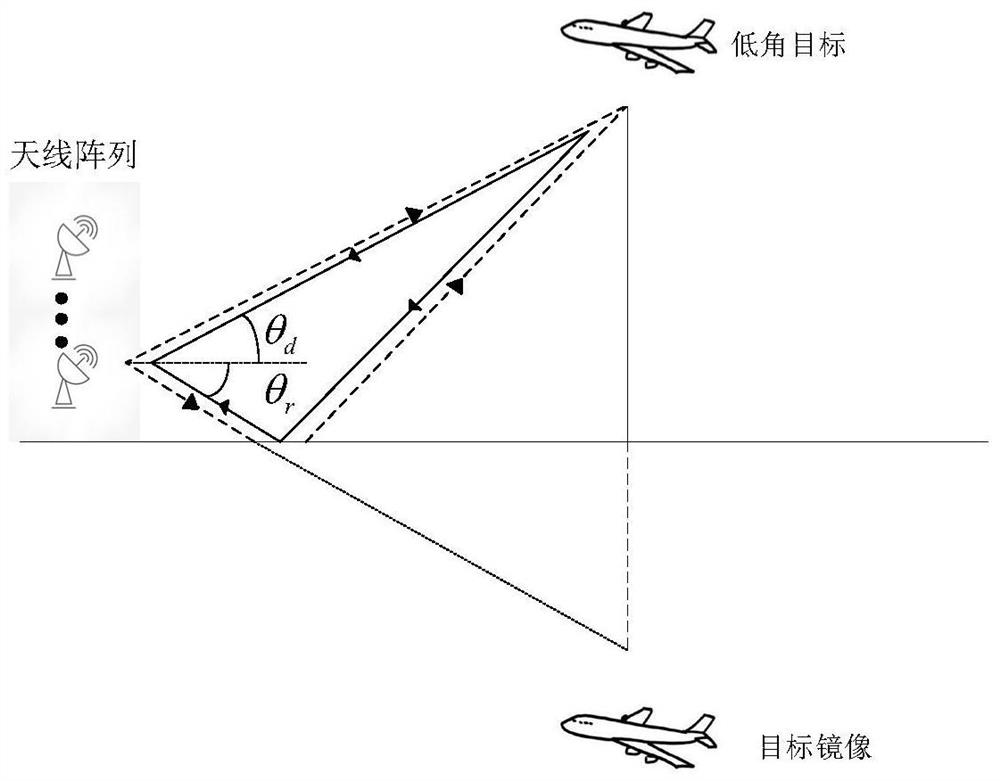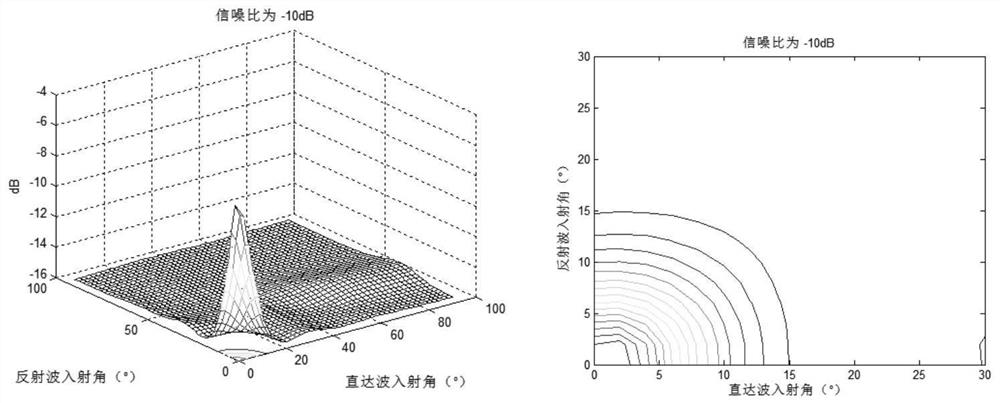A doa estimation method for mimo radar based on low-altitude multipath
A DOA and radar technology, which is applied in the field of high-precision direction-of-arrival estimation at low-altitude elevation angles, can solve the problems of estimation algorithm calculation performance degradation, performance impact, and radar accuracy, and achieve better results and smaller root mean square errors.
- Summary
- Abstract
- Description
- Claims
- Application Information
AI Technical Summary
Problems solved by technology
Method used
Image
Examples
Embodiment Construction
[0020] The present invention will be further described below in conjunction with the accompanying drawings and implementation steps.
[0021] The flow chart of DOA estimation method based on MIMO radar at low elevation angle is as follows: figure 1 shown, including the following steps:
[0022] Step 1: Set the experimental conditions as the number of sampling points is 100, the signal-to-noise ratio is 5dB, and the uniform linear array with the number of array elements is 6. Let the MIMO radar be composed of M isotropic array elements with an array element spacing of d. Sending and receiving co-located uniform linear array, assuming there is only one target, θ d and θ r are the incident angles of the direct wave and the incident angles of the reflected waves, respectively, and the transmitted signal matrix is:
[0023] S F (t)=[s F1 (t),s F2 (t),...,s FM (t)] T
[0024] In the above formula, s Fi (t), i=1,2,...,M. Indicates the transmitted signal of the i-th array el...
PUM
 Login to View More
Login to View More Abstract
Description
Claims
Application Information
 Login to View More
Login to View More - R&D
- Intellectual Property
- Life Sciences
- Materials
- Tech Scout
- Unparalleled Data Quality
- Higher Quality Content
- 60% Fewer Hallucinations
Browse by: Latest US Patents, China's latest patents, Technical Efficacy Thesaurus, Application Domain, Technology Topic, Popular Technical Reports.
© 2025 PatSnap. All rights reserved.Legal|Privacy policy|Modern Slavery Act Transparency Statement|Sitemap|About US| Contact US: help@patsnap.com



